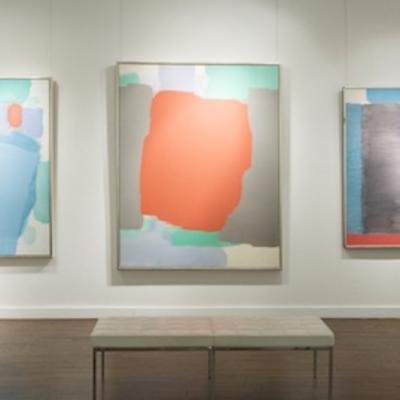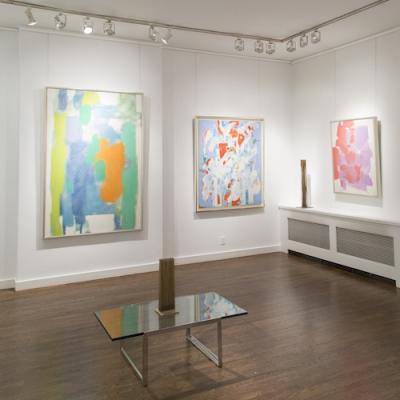Expressive forms; striking color. The vivid paintings of Carl Holty capture the sublime transcendence of the Color Field movement with a finesse that few other Abstract Expressionists were able to achieve. From his post-Cubist 1950s pieces to his floating '70s compositions, Holty pushed the boundaries of nonrepresentation.
"Holty never considered the solution of just painting his canvas one pure color."
—Romare Bearden
The German-born American Abstractionist Carl Robert Holty (1900-1973) became known for his biomorphic abstract forms and geometric abstractions. Indelibly linked to both the Abstract Expressionist and Geometric Abstractionist art movements, Holty was a major proponent of Modernism in the United States and was a contributory influence to the world of American painting. He was a member of the Abstraction-Création Group in Paris, as well as a founding member of the American Abstract Artists. By the 1960s, Holty was creating paintings dominated by large color fields rendered with thinly washed fluid areas within subtly toned spaces, revealing the influences of Morris Louis and Helen Frankenthaler. A student of Hans Hofmann and his color theories of expanding dimensions and exuberant colors in abstractions, Holty created large, soft-edged color forms that were either mixed or floated on chromatic stains, experimenting with the relationship of space and form within a two-dimensional plane.


